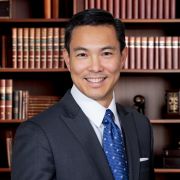On February 21, 2025, the Securities and Futures Commission ("SFC") led discussions among Asia-Pacific securities regulators at IOSCO meetings, achieving consensus on regulatory pathways for sustainability and investor protection.
This article was generated using SAMS, an AI technology by Timothy Loh LLP.
On February 21, 2025, the Securities and Futures Commission ("SFC") led discussions among Asia-Pacific securities regulators at the regional committee meetings of the International Organization of Securities Commissions ("IOSCO").
Under the chairmanship of the SFC’s Chief Executive Officer, Ms. Julia Leung, the IOSCO Asia-Pacific Regional Committee ("APRC") convened for three days from 19 to 21 February 2025 in Vietnam. The meeting aimed to foster regional collaboration on pressing issues.
Members of the APRC agreed upon a coordinated strategy to combat investment fraud and online harm. They shared best practices in detecting and investigating fraud, while also exploring technological solutions to tackle emerging challenges.
Ms. Leung engaged in discussions with Ms. Vu Thi Chan Phuong, Chairwoman of Vietnam’s State Securities Commission ("SSC"), focusing on supervisory cooperation, crypto regulation, and capital market concerns. This meeting also marked SSC's formal accession as the 14th signatory to the APRC Multilateral Memorandum of Understanding for Supervisory Cooperation ("SMMoU").
Ms. Leung delivered a keynote address at the SSC Vietnam Symposium, highlighting the APRC as a critical platform for cross-border regulatory collaboration. This fosters global confidence in Asia-Pacific’s expanding capital markets.
In the afternoon, Ms. Leung co-chaired the EU-Asia-Pacific Forum on Financial Regulation with Ms. Nathalie De Basaldua, discussing the regulation and supervision of financial digitalization, fintech, and sustainable finance.
Previously, senior executives from the SFC participated in the APRC Enforcement Directors’ Meeting and the Supervisory Directors’ Meeting. They exchanged insights and views on regulatory priorities, the integration of technology, the use of generative artificial intelligence, and safekeeping virtual assets.
View the full article:Source





